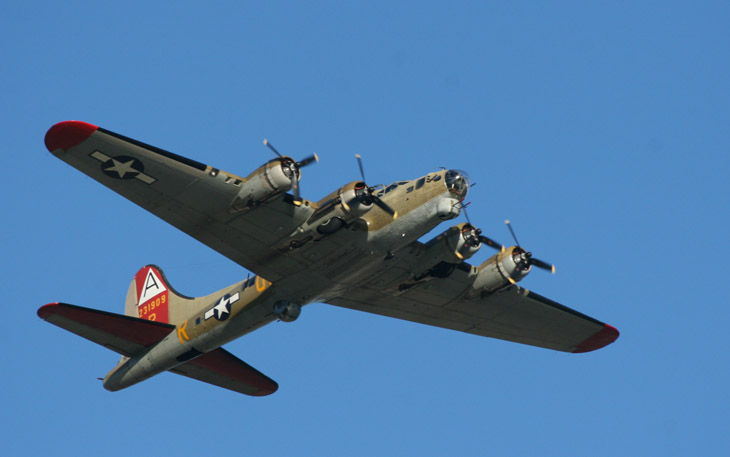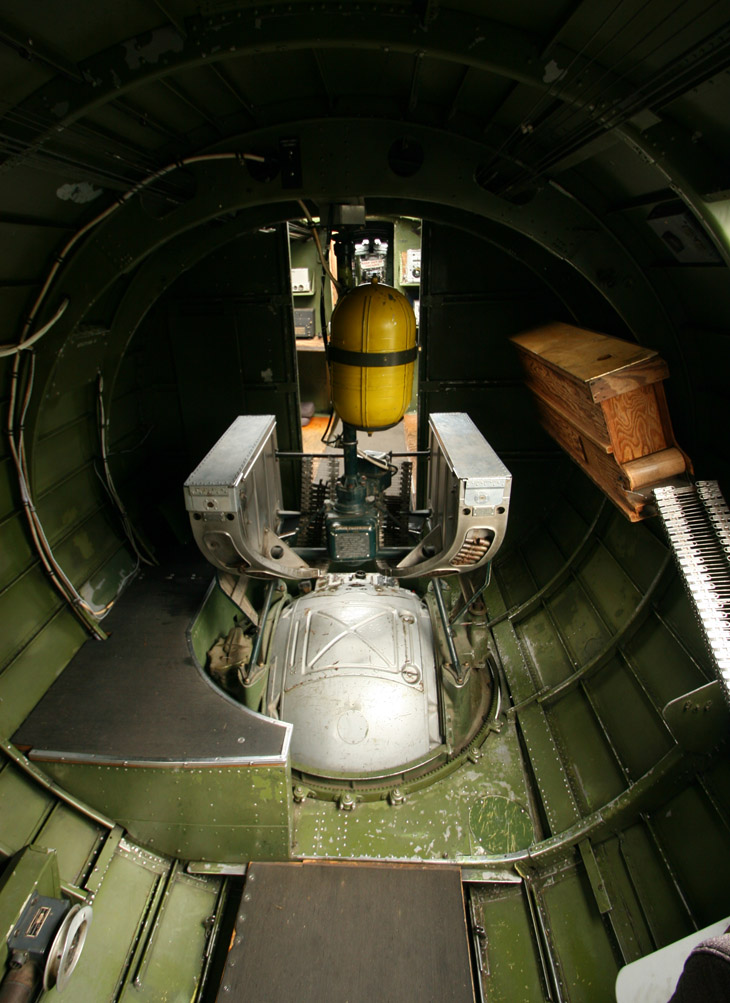
Two years ago, I wrote about visiting a show featuring vintage WWII aircraft owned and operated by the Collings Foundation, among them a Boeing B-17G Flying Fortress model dubbed, “909,” seen above. This aircraft was not only open to walking tours through the fuselage, tickets were available to take a flight in it as well (along with three other aircraft on the same “Wings of Freedom” tour.) Had I the available funds, I would likely have taken a flight in at least one of them, but the price was well out of my budget at the time; I did at least tour through it and took countless photos, because I’ve always been an enthusiast over WWII-era combat aircraft.
Tragically, on October 2 of this year, that same B-17G developed engine trouble while doing a tour flight with several passengers, and crashed just short of the runway while attempting to return to the airport only minutes after takeoff. The crash killed seven of the thirteen people aboard, among them the pilot and copilot. The National Transportation Safety Board (NTSB,) which is the primary investigative body for aircraft accidents, will be examining the wreckage and radio transmissions for some months to come and has not issued any distinct details, but at the moment the evidence is pointing towards engine problems, and not some particular fault of the crew.
As always, any situation like this raises numerous questions about the safety and reliability of an aircraft that first rolled off the line in April 1945, before either of the deceased crewmembers were born, and such questions are not without merit, even when the risk of operating such older aircraft is known.
First the bare facts of the matter. The B-17 was first introduced in 1935 and was produced in prodigious numbers during World War II, and reflected the attitudes of the time. A lot of aircraft were needed quickly, largely because the attrition rate was so high for bombers; the idea that these would still be flying even ten years later wasn’t really considered. And of course, they were and still are a product of the technology of the time, since retrofitting or updating most portions of the engines or airframes wasn’t a goal much after the war ended. This particular aircraft never saw combat, but was used during nuclear tests in the fifties. All warbirds today are maintained either through caches of spare parts manufactured back during the regular production runs in the 40s, or with custom-machined parts as needed; the costs of the latter means that much more of the former is the case, and these aircraft are primarily flying on parts over 70 years old.
Any fatal crash is a tragedy, but in cases where the passengers were flying in such aged and difficult to maintain vintage aircraft, it is always asked whether such a thing had to happen, or if the risk of operating such a vehicle for air tours is far too great, but no question is as simple as that. In our age of all-but-guaranteed safety for nearly everything that we do, we come to expect nothing less, but the men who originally flew in these had no such guarantees or expectations; which perspective should we be adopting here? And of course, such flights are not “necessary” in most senses of the word, but then again, neither is at least half of the things that we engage in everyday. The risks are far more known and accepted during such flights than they are for, say, a fire in our apartment complex.
But are such flights even necessary? Is there some aspect of history, of education, of mere human experience, that is provided by such operations? It is certainly not necessary to attempt to maintain these aircraft in flying order, but exactly how much more interest, how much more impact, is fostered by such? As I said, I would have flown in one without hesitation given the available funds, with the risks well known (I follow enough of the news to know how frequently such aircraft develop trouble.) And I can vouch for the awesome experience of hearing those engines, a sound which nothing before or since has ever produced. It is as close as we can get to experiencing the conditions of the European air war firsthand, but I’ll be the first to admit that it probably over-glamorizes it as well.

Should we be maintaining these aircraft solely as museum pieces, or at the very least, allowing the risks to be taken only by a select few trained crewmembers with distinctive knowledge of the hazards? Most museums and vintage aircraft organizations feel this way, and it’s not hard to make a rational case for it. But at the same time, no museum that I have ever come across allows visitors to tour through the aircraft, even on static display, and again, the impact of seeing those conditions and quarters firsthand is far, far greater than seeing it through photos, videos, and even intricate model kits, which encompass my experience up until those days two years back. The high ticket prices for the brief air tours always go towards maintaining these aircraft, flying or otherwise, at a time when too few museums are adequately funded. It is an ugly reflection of our society, perhaps, that we have to turn to private foundations and risky flights to help fund these tangible historical examples.
And then again, maybe the impact on me personally only came about because I already possessed the interest in WWII aircraft; Mr Bugg was with me during one of those visits two years ago, but showed far more interest in the passing commercial airliners than the warbirds literally at his fingertips. Maybe we don’t need any such examples, but just enough emphasis on this period in history (and any other, not to be single-minded) to make an impact to begin with. And there’s even the idea that concentrating on the aircraft (or tanks, or strategies, or news reports) misses the more important focus on how we even get into wars in the first place, and how we could avoid them in the future. There is no doubt that a good portion of our history, from the military standpoint, glorifies the “brave defender” aspect and the shameless tribalism rather than presenting it as a disturbing and reprehensible example of our baser instincts that we really should be attempting to eradicate.
I have no real answers or directions that I’m leading with all this; I just wanted to put down a few thoughts that the crash fostered in me again, and to provoke a few different perspectives.




















































